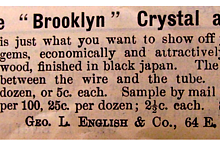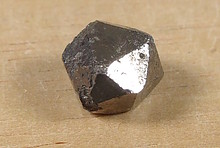Home PageAbout MindatThe Mindat ManualHistory of MindatCopyright StatusWho We AreContact UsAdvertise on Mindat
Donate to MindatCorporate SponsorshipSponsor a PageSponsored PagesMindat AdvertisersAdvertise on Mindat
Learning CenterWhat is a mineral?The most common minerals on earthInformation for EducatorsMindat ArticlesThe ElementsThe Rock H. Currier Digital LibraryGeologic Time
Minerals by PropertiesMinerals by ChemistryAdvanced Locality SearchRandom MineralRandom LocalitySearch by minIDLocalities Near MeSearch ArticlesSearch GlossaryMore Search Options
The Mindat ManualAdd a New PhotoRate PhotosLocality Edit ReportCoordinate Completion ReportAdd Glossary Item
Mining CompaniesStatisticsUsersMineral MuseumsClubs & OrganizationsMineral Shows & EventsThe Mindat DirectoryDevice SettingsThe Mineral Quiz
Photo SearchPhoto GalleriesSearch by ColorNew Photos TodayNew Photos YesterdayMembers' Photo GalleriesPast Photo of the Day GalleryPhotography
╳Discussions
💬 Home🔎 Search📅 LatestGroups
EducationOpen discussion area.Fakes & FraudsOpen discussion area.Field CollectingOpen discussion area.FossilsOpen discussion area.Gems and GemologyOpen discussion area.GeneralOpen discussion area.How to ContributeOpen discussion area.Identity HelpOpen discussion area.Improving Mindat.orgOpen discussion area.LocalitiesOpen discussion area.Lost and Stolen SpecimensOpen discussion area.MarketplaceOpen discussion area.MeteoritesOpen discussion area.Mindat ProductsOpen discussion area.Mineral ExchangesOpen discussion area.Mineral PhotographyOpen discussion area.Mineral ShowsOpen discussion area.Mineralogical ClassificationOpen discussion area.Mineralogy CourseOpen discussion area.MineralsOpen discussion area.Minerals and MuseumsOpen discussion area.PhotosOpen discussion area.Techniques for CollectorsOpen discussion area.The Rock H. Currier Digital LibraryOpen discussion area.UV MineralsOpen discussion area.Recent Images in Discussions
Techniques for CollectorsRaman Spectroscopy
17th Jul 2013 18:10 UTCReiner Mielke Expert

17th Jul 2013 18:38 UTCAlex Homenuke Expert
17th Jul 2013 19:13 UTCOwen Lewis
You are looking at analogues of molecular vibration within different samples of the same mineral . The mineral you have selected has a relatively complex chemistry (and structure) The pattern created depends on the on the molecular makeup of the area of the sample under test the orientation of the sample and other factors. The traces here show differences in composition (and or attitude) as well as similarities. You need to decide what makes a 'good; sample for your purposes and then look for the response peak that such a known good sample shows. Can you see all the peaks that should be present in an analogue trace for it If you can't, which peaks are missing and what to the missing peaks represent and what is the significance of the missing information to you. That's before getting to the causes of activity you can see detected, that do not associate with the theoretical perfection of the substance you test for.
Raman analysis is not to be picked up from a book over a wet week-end. It takes experience and the building up of much information . Driving the instrument needs only a good technician. Supervising and interpreting the output requires experience and a post-grad standard of education in the relevant sciences.

17th Jul 2013 20:39 UTCStefan Oertel
Cheers,
Stefan
18th Jul 2013 01:34 UTCReiner Mielke Expert
I guess if it is confirmed then 3 peaks is sufficient and my question is answered. However I would have thought that such experiments had already been done on other minerals and someone could tell me if this is generally the case.
Thank you Owen,
Let me rephrase my question. Assuming that the people at Ruff who produced the spectra are competent and that the results are representative of the minerals tested, are the two patterns sufficiently different to be able to conclude with 90% confidence that the samples analyzed are of two different mineral species?
18th Jul 2013 09:59 UTCUwe Kolitsch Manager
Your rephrased question cannot be answered. One would have to know all available data on the samples (e.g., chemical homogeneity, crystalline state, submicroscopic impurities etc.).
18th Jul 2013 14:02 UTCReiner Mielke Expert




Mindat.org is an outreach project of the Hudson Institute of Mineralogy, a 501(c)(3) not-for-profit organization.
Copyright © mindat.org and the Hudson Institute of Mineralogy 1993-2024, except where stated. Most political location boundaries are © OpenStreetMap contributors. Mindat.org relies on the contributions of thousands of members and supporters. Founded in 2000 by Jolyon Ralph.
Privacy Policy - Terms & Conditions - Contact Us / DMCA issues - Report a bug/vulnerability Current server date and time: April 27, 2024 04:11:03
Copyright © mindat.org and the Hudson Institute of Mineralogy 1993-2024, except where stated. Most political location boundaries are © OpenStreetMap contributors. Mindat.org relies on the contributions of thousands of members and supporters. Founded in 2000 by Jolyon Ralph.
Privacy Policy - Terms & Conditions - Contact Us / DMCA issues - Report a bug/vulnerability Current server date and time: April 27, 2024 04:11:03












